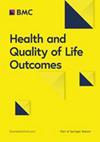Health state utility estimates for value assessments of novel treatments in Huntington’s disease: a systematic literature review
IF 3.2
2区 医学
Q1 HEALTH CARE SCIENCES & SERVICES
引用次数: 0
Abstract
Huntington’s disease (HD) is a progressive neurodegenerative disease with a devastating impact on patients and their families. Quantifying how treatments affect patient outcomes is critical for informing reimbursement decisions. Many countries mandate a formal value assessment in which the treatment benefit is measured as quality-adjusted life-years, calculated with the use of utility estimates that reflect respondents’ preferences for health states. To summarize published health state utility data in HD and identify gaps and uncertainties in the data available that could be used to inform value assessments. We conducted a systematic literature review of studies that used preference-based instruments (e.g., EQ-5D and SF-6D) to estimate utility values for people with HD. The studies were published between January 2012 and December 2022. Of 383 articles screened, 16 articles reported utility values estimated in 11 distinct studies. The utility measure most frequently reported was EQ-5D (9/11 studies). Two studies reported SF-6D data; one used time trade-off methods to value health state descriptions (vignettes). Although utility scores generally worsened to a lower value with increased HD severity, the estimates varied considerably across studies. The EQ-5D index range was 0.89 − 0.72 for mild/prodromal HD and 0.71 − 0.37 for severe/late-stage disease. This study uncovered high variability in published utility estimates, indicating substantial uncertainty in existing data. Further research is needed to better understand preferences and valuation across all stages and domains of HD symptoms and the degree to which generic utility measures capture the impact of cognitive changes on quality of life.亨廷顿氏病新型疗法价值评估的健康状态效用估计:系统性文献综述
亨廷顿氏病(HD)是一种渐进性神经退行性疾病,对患者及其家庭具有毁灭性影响。量化治疗对患者预后的影响对于做出报销决定至关重要。许多国家强制要求进行正式的价值评估,其中治疗效益以质量调整生命年来衡量,通过使用反映受访者对健康状态偏好的效用估计值来计算。为了总结已发表的人类免疫缺陷病毒(HD)健康状态效用数据,并找出可用数据中的差距和不确定性,为价值评估提供依据。我们对使用基于偏好的工具(如 EQ-5D 和 SF-6D)估算 HD 患者效用值的研究进行了系统性文献综述。这些研究发表于 2012 年 1 月至 2022 年 12 月之间。在筛选出的 383 篇文章中,有 16 篇文章报告了 11 项不同研究中估算出的效用值。报告最多的效用指标是 EQ-5D(9/11 项研究)。两项研究报告了 SF-6D 数据;一项研究使用时间权衡法对健康状态描述(小故事)进行估值。虽然效用评分通常会随着 HD 严重程度的增加而降低,但不同研究的估计值差异很大。轻度/前驱期 HD 的 EQ-5D 指数范围为 0.89 - 0.72,重度/晚期疾病的 EQ-5D 指数范围为 0.71 - 0.37。本研究发现,已发表的效用估计值存在很大差异,这表明现有数据存在很大的不确定性。需要进一步开展研究,以更好地了解各阶段和各领域 HD 症状的偏好和估值,以及通用效用指标在多大程度上反映了认知变化对生活质量的影响。
本文章由计算机程序翻译,如有差异,请以英文原文为准。
求助全文
约1分钟内获得全文
求助全文
来源期刊
CiteScore
7.30
自引率
2.80%
发文量
154
审稿时长
3-8 weeks
期刊介绍:
Health and Quality of Life Outcomes is an open access, peer-reviewed, journal offering high quality articles, rapid publication and wide diffusion in the public domain.
Health and Quality of Life Outcomes considers original manuscripts on the Health-Related Quality of Life (HRQOL) assessment for evaluation of medical and psychosocial interventions. It also considers approaches and studies on psychometric properties of HRQOL and patient reported outcome measures, including cultural validation of instruments if they provide information about the impact of interventions. The journal publishes study protocols and reviews summarising the present state of knowledge concerning a particular aspect of HRQOL and patient reported outcome measures. Reviews should generally follow systematic review methodology. Comments on articles and letters to the editor are welcome.

 求助内容:
求助内容: 应助结果提醒方式:
应助结果提醒方式:


